Research Article
Volume 2 Issue 4 - 2018
Cost as a Barrier to Access Dental Healthcare in Saudi Patients
BDS, Collage of Dentistry, Qassim University
*Corresponding Author: Abdulmajeed Al-jabr, BDS, Collage of Dentistry, Qassim University, Saudi Arabia.
Received: January 05, 2018; Published: January 19, 2018
Abstract
Objective: Aim: to measure the cost as a barriers which inhibit Saudi people from obtaining dental care.
Material and methods: A cross-sectional study through a questionnaire-based e-survey has been published to social networks, forums, emails, online newspapers, the answered questionnaire accounted for 15,786 individuals, among whom 14,831 were participated in the study after applying inclusion and exclusion criteria.
Results: 62.1% of the sample stopped their treatment due to costs. 73.1% of the sample think cost of dental treatment is expensive. 55.2% of the sample do not find a complete of variety of dental treatment in public health care. Overall, 84.4% of the sample prefer private clinics over public clinics.
Conclusion: Approximately two in three Saudis experience financial barriers to dental care.
Key words: Costs; Access to dental care; Saudi; Public health care
Introduction
In recent years, there has been growing awareness in the society about the dental care and dental problems. The different types of media have been helping the society so much for increasing knowledge about Access to Dental Care. However, there are so many barriers can prevent the society from getting a good care for their own oral care. The much the barriers the much the poor oral care from the society. [1]
Saudi Arabia has several governmental hospitals and primary health care centers and hosts many private hospitals and dental clinics; most private clinics are located within the city fringe. Saudi Arabia is one of the countries in the Middle East region that is becoming a popular medical destination. Cost of dental care is considerably cheaper than Western and European countries. The typical cost for example of orthodontic treatment in Saudi Arabia ranges from SAR 3,500.00 (approximately USD$933.00) to SAR 15,000.00 (about USD$4, 000.00) compared to the national average cost in the US that starts from USD$4,941.00 (for children) and UK at £3,500.00 (approximately USD$5, 29.00).
The health system in general including dental treatment in Saudi Arabia are free provided by the government. The primary health care centers are located around the kingdom and treat the most of the dental procedures (oral hygiene instruction, diagnosis, restorations, simple extractions and scaling ) and all these procedures done by general practitioner and referrals to the hospitals when need intervention by specialist ( complicated surgical procedures , prosthodontics and orthodontic treatment ) and usually the appointments in these hospitals takes time so the patients tend to private clinics for dental treatment. Most employers provide standard private health insurance in Saudi Arabia that can include fillings and extractions. Expats are recommended to add specialized treatment involving crowns, bridges and other prosthetics or buy an international health insurance plan in Saudi Arabia that will provide full dental coverage.
The issue of “access to care” is undoubtedly a significant health care policy concern. The term “access to care" is one of the most frequently used terms used in discussions of the health care system (Penchansky & Thomas, 1981) and often embodies a number of meanings and interpretations. It is important to define access carefully, however. In 1981, Penchansky and Thomas ventured to define access in the context of the health care system and presented a general concept of access that describes a series of specific dimensions outlining the fit between the characteristics and expectations of patients and health care providers (Penchansky & Thomas, 1981).
These dimensions were developed into the “five as” of access to care: affordability, availability, accessibility, accommodation, and acceptability. [2]
In a way to decrease the barriers, we should know first what these barriers are, and how do they can prevent or make the dental care difficult for the society. [3] Dental anxiety for example is a potential barrier to seeking dental care and its association with oral health is of central importance. [4] Availability of dental services, or the lack of, was identified as a key barrier to the utilization of dental services amongst respondents. [5]
The cost of attending for dental care is a potential barrier to attending the dentist. In addition , uncertainty about cost has been highlighted in previous national dental surveys as a barrier to attending and was also the subject of a super-complaint about private dentistry investigated by the Office of Fair Trading in 2003. [6] Another aspect of cost as a barrier is the extent to which cost influences decisions about types of dental treatment and/or delaying required treatment. [7]
The aim of the present study was to measure the cost as a barriers, which inhibit Saudi people from obtaining dental care.
Materials and Methods
A cross-sectional study through a questionnaire-based e-survey. The questionnaire consisted of two parts: The first part was composed of items on demographic data: nationality, age, gender and education level. The second part included six sections dealing with the following items:
- History of visiting dental clinics
- Preferred Clinics.
- Cost as a barrier to complete dental treatment
- dental treatment costs
- dental costs Vs. access to dental care
- Availability of variety of dental treatments in public health cares.
Only mid-class socioeconomically status Saudi people with previous history of visiting dental clinics were included in the survey. Participants who never visited dental clinics before and patients below 13 years old were excluded from the study. The questionnaire was written in Arabic was conducted online through forums, social networks, emails, websites and online newspapers. Data were collected through Google Documents to be collected and analyzed.
The answered questionnaire accounted for 15,786 individuals, among whom 14,831 were participated in the study after applying inclusion and exclusion criteria. (Table 1).
| No. (N = 14,831) | % | |
| Gender | ||
| Male | 5962 | 40.2% |
| Female | 8869 | 59.8% |
| Age | ||
| 13-17y | 1779 | 12% |
| 18-24y | 6822 | 46% |
| 25-34y | 4153 | 28% |
| 35-49y | 1780 | 12% |
| 50+ y | 297 | 2% |
| Education | ||
| < high school | 1631 | 11% |
| High-school | 2818 | 19% |
| Bachelor's | 9344 | 63% |
| Postgraduate | 890 | 6% |
| others | 148 | 1% |
Table 1:
Collected Data were analyzed using the Statistical Program for Social Sciences (SPSS) version 17. Descriptive statistics were performed using frequency count and percentages. Chi square tests were performed to determine the difference between studied groups at the 5% level of significant.
Results
The total number of accepted participants was 14831. There was an unequal distribution between male [40.2%] and female [59.8%] among the sample and the majority were 18-24 [46%] and 25-34 [28%] years of age. The sample were highly educated Bachelor's [63%] and high school [19%] and postgraduate [6%].
Preferred clinics
Chart 1, 2 and 3 shows the preferred clinics among sex and age and education we can see from these Charts that most of the population prefer private clinics over public ones. From charts 1, 2 and 3 we can see that most Saudis with different age, sex, and education prefer private clinics over public one. Of course, that is due to variety of reasons we did not discover it in this study but we can expect that public dental clinics require too much time to see a dentist due to appointments and paper things... etc.
Chart 1, 2 and 3 shows the preferred clinics among sex and age and education we can see from these Charts that most of the population prefer private clinics over public ones. From charts 1, 2 and 3 we can see that most Saudis with different age, sex, and education prefer private clinics over public one. Of course, that is due to variety of reasons we did not discover it in this study but we can expect that public dental clinics require too much time to see a dentist due to appointments and paper things... etc.
Costs inhibits completing of dental treatment
Chart 4, 5, and 6 shows costs that inhibit the society from completing their dental treatment among sex, age, and education. Form Charts 4, 5, and 6 we can translate that 36.2% female and 25.2% male stopped their dental treatment due to costs. That is equal 62.1% of the whole sample, which equal 9210 persons.
Chart 4, 5, and 6 shows costs that inhibit the society from completing their dental treatment among sex, age, and education. Form Charts 4, 5, and 6 we can translate that 36.2% female and 25.2% male stopped their dental treatment due to costs. That is equal 62.1% of the whole sample, which equal 9210 persons.
In Chart 5, there is a difference between ages in their completing dental treatment or not due to costs. We can see that the high the age the increase of stopping of dental treatment due to costs.
In Chart 6, we can see that the most education brand that costs did not alter their completing of treatment are the people with secondary school degree. Of course, because of the little number we cannot tell if the whole population like that or not.
Costs of dental treatment
Chart 7, 8, and 9 shows what the society think about dental treatment costs among sex, age, and education. From Charts 7, 8, and 9, we can translate that 73.1% of the population think that dental treatment costs are expensive.
Chart 7, 8, and 9 shows what the society think about dental treatment costs among sex, age, and education. From Charts 7, 8, and 9, we can translate that 73.1% of the population think that dental treatment costs are expensive.
Costs prevent society from getting dental care
Chart 10, 11, and 12 shows the sample opinions about dental treatment costs preventing the society from getting dental care among sex, age, and education. From Charts 10, 11, and 12, we can take a message from the society that dental treatment costs are preventing them from getting a dental care.
Chart 10, 11, and 12 shows the sample opinions about dental treatment costs preventing the society from getting dental care among sex, age, and education. From Charts 10, 11, and 12, we can take a message from the society that dental treatment costs are preventing them from getting a dental care.
Varity of dental treatment in public health cares
Chart 13, 14, and 15 shows that can the society find variety of dental treatment in public health cares among sex, age, and education. From Chart 13, 14, and 15, we can see that most of the society do not find a complete of variety of Dental treatment in public health care. This is maybe an answer of why most of the society prefer private clinics to public ones. 55.2 % of the population reported that they do not find complete dental treatment in public health care. Only 10% of the population reported that they find all they need from dental treatment in public health care.
Chart 13, 14, and 15 shows that can the society find variety of dental treatment in public health cares among sex, age, and education. From Chart 13, 14, and 15, we can see that most of the society do not find a complete of variety of Dental treatment in public health care. This is maybe an answer of why most of the society prefer private clinics to public ones. 55.2 % of the population reported that they do not find complete dental treatment in public health care. Only 10% of the population reported that they find all they need from dental treatment in public health care.
Discussion
This study is the first to examine cost barriers to dental care among Saudis. Results from this study met four objectives: The first objective was to see what the society prefer for dental treatment. In addition, it was found that 84.6% of the population prefer private clinics over the public ones. The second objective was to see what are the effects of dental treatment costs among the society, and it found that it inhibit 36.2 female and 25.9 males from completing their treatment. The third objective was to see what the society think about the dental treatment costs. Moreover, it found that 73.1% of the society thinks it is expensive.
The fourth objective was to see if the public health care have complete dental treatment of what the society needs or not, and it found that 55.2 of the society don't found what they need in public health care , and only 10% found a complete treatment of what they need.
Limitation of the study
1- The study based on e-survey, so the result is not 100% true, and that's due to a lot of reasons, first: the people who can access to this survey are only the people who have internet access. Second: some people may understand some questions wrongly, and they answer any way. Third, there is no control of who can answer and who cannot, for example some people may answered twice, some may answered more.
1- The study based on e-survey, so the result is not 100% true, and that's due to a lot of reasons, first: the people who can access to this survey are only the people who have internet access. Second: some people may understand some questions wrongly, and they answer any way. Third, there is no control of who can answer and who cannot, for example some people may answered twice, some may answered more.
Second, there is no previous research focusing in costs barrier to access to dental care among Saudi people. Third, there were some limitations on the questioner. There were no questions about the total income and whether they have insurance or not, and what are the causes of preferring private clinics or public ones, and also what are the types of treatment that you can't find in public health care. Fourth, the number of participants is not enough to get an absolute value about access to dental care especially when we know the number of population in Saudi Arabia is over 31 million [10] and our sample was just nearly around 15 thousand.
Conclusion
Findings from this study indicate that approximately two in three Saudis experience financial barriers to dental care. This study confirms that Saudis with different ages, sex and education experiencing problems of dental care, some may stopped their treatment, some may have did not go for a treatment because of costs. Being the first of its kind in the Saudi dental care context, this study makes an important contribution in highlighting the oral health of Saudis by focusing on one of the most important barrier in access to dental care.
Overall, this study provides valuable baseline information for future studies to assess whether financial barriers to dental care are getting better or worse for Saudis. Going forward, governments must make a commitment to invest in ongoing surveillance systems to ensure oral health data collection is conducted on a regular basis and collects Information relating to access issues and clinical oral health assessments of all Saudis.
References
- Age Concern England Dental Health in OJd Age selected Age Concern England policies. Mitcham, Surrey, (1983).
- Penchansky Roy and Thomas J William. “The Concept of Access: Definition and Relationship to Consumer Satisfaction.” Medical Care 19.2 (1981): 127-140.
- Breaking Down barriers to Oral Health for All Americans: The role of workforce, ADA, February (2011).
- Corah. “Development of a dental anxiety scale.” Journal of Dental Research 48.4 (1969): 596.
- Elena Borreani., et al. “Minimising barriers to dental care in older people.” BMC Oral Health 8:7 (2008).
- The Office of Fair Trading the private dentistry market in the UK. March (2003).
- Access and barriers to care - a report from the Adult Dental Health Survey 2009, The Health and Social Care Information Centre (2011).
- Australian Research Centre for Population Oral Health, the University of Adelaide, South Australia. (2012). “The avoidance and delaying of dental visits in Australia”. Australian Dental Journal 57.2 (2012): 243-247.
- Harford J E., et al. “Trends in access to dental care among Australian adults 1994-2008.” Dental statistics and research series no. 55. Cat. No. DEN 204. Canberra: Australian Institute of Health and Welfare (2011).
- Central Department of Statistics & Information of Saudi Arabia, (2015).
Citation:
Abdulmajeed Al-jabr and Ashraf Alhujaili. “Cost as a Barrier to Access Dental Healthcare in Saudi Patients”. Oral Health and
Dentistry 2.4 (2018): 401-409.
Copyright: © 2018 Abdulmajeed Al-jabr and Ashraf Alhujaili. This is an open-access article distributed under the terms of the Creative Commons Attribution License, which permits unrestricted use, distribution, and reproduction in any medium, provided the original author and source are credited.



































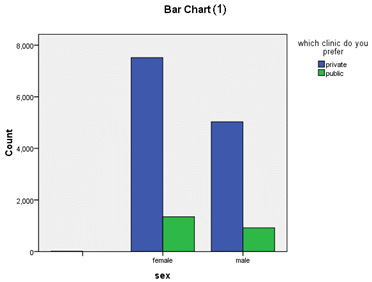
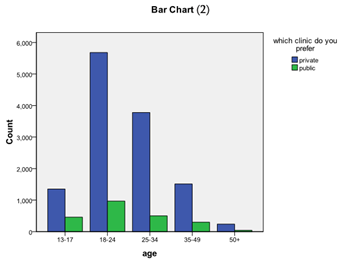
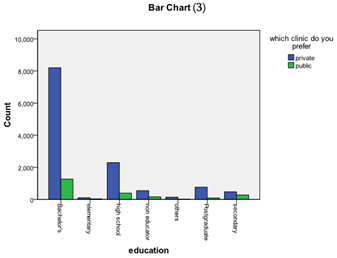
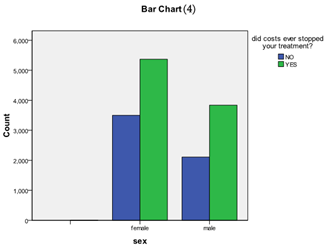
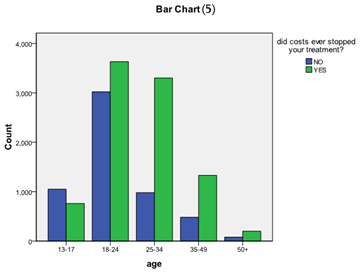
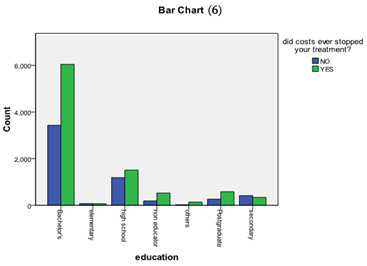
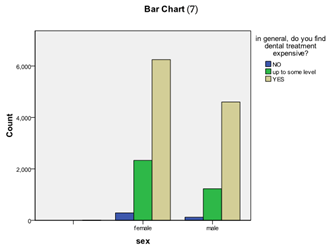
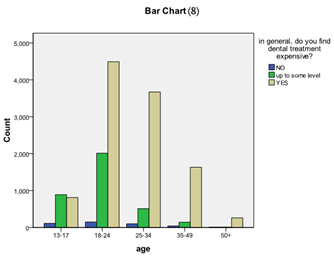
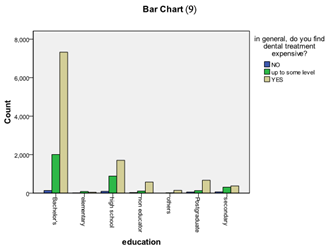
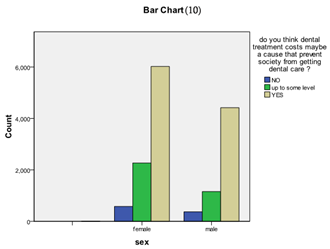
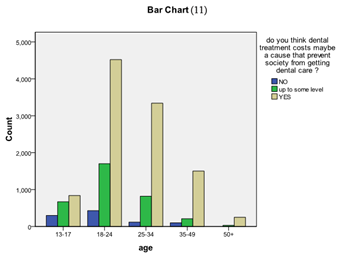
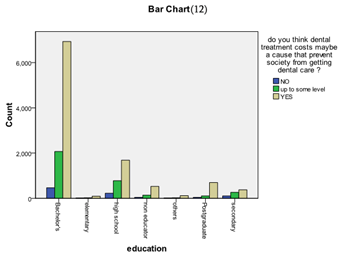
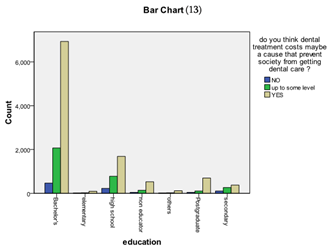
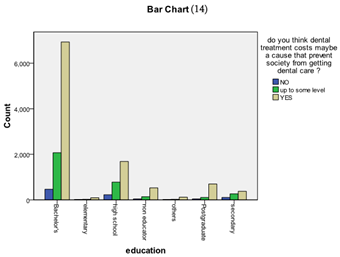
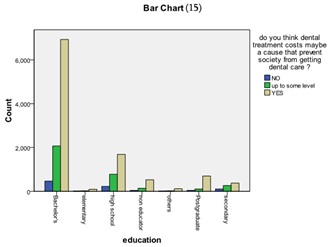
 Scientia Ricerca is licensed and content of this site is available under a Creative Commons Attribution 4.0 International License.
Scientia Ricerca is licensed and content of this site is available under a Creative Commons Attribution 4.0 International License.